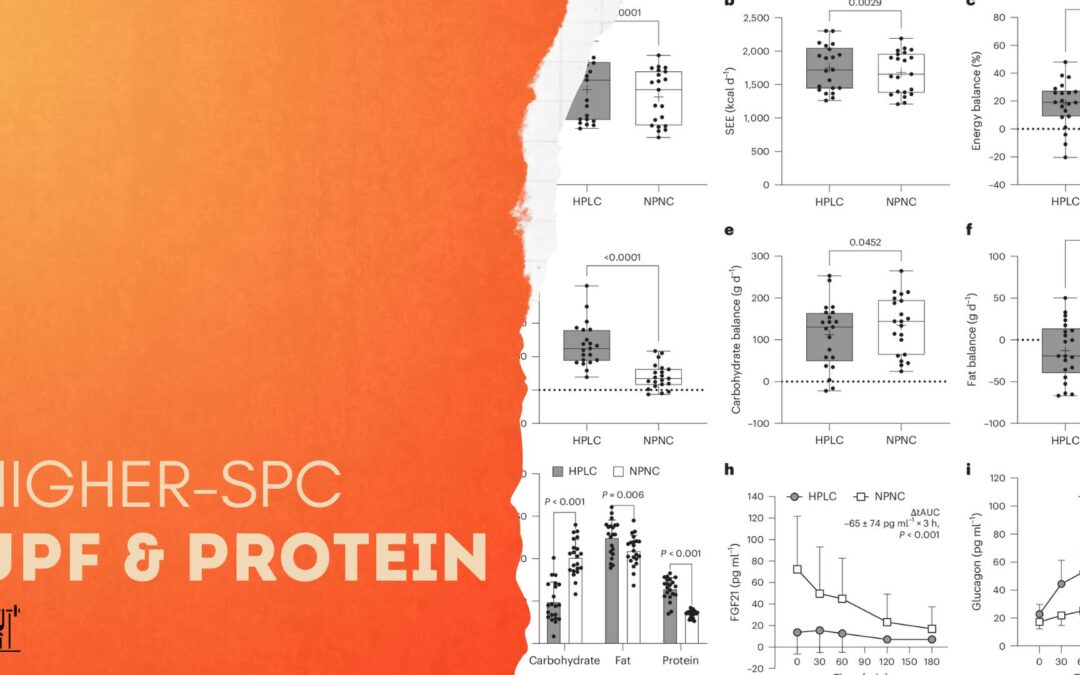Strength By Fitness
20 Years of High-protein & SPC Food Studies and Real Life Outcomes
Welcome to another fact-based coaching article from Strength by Fitness.
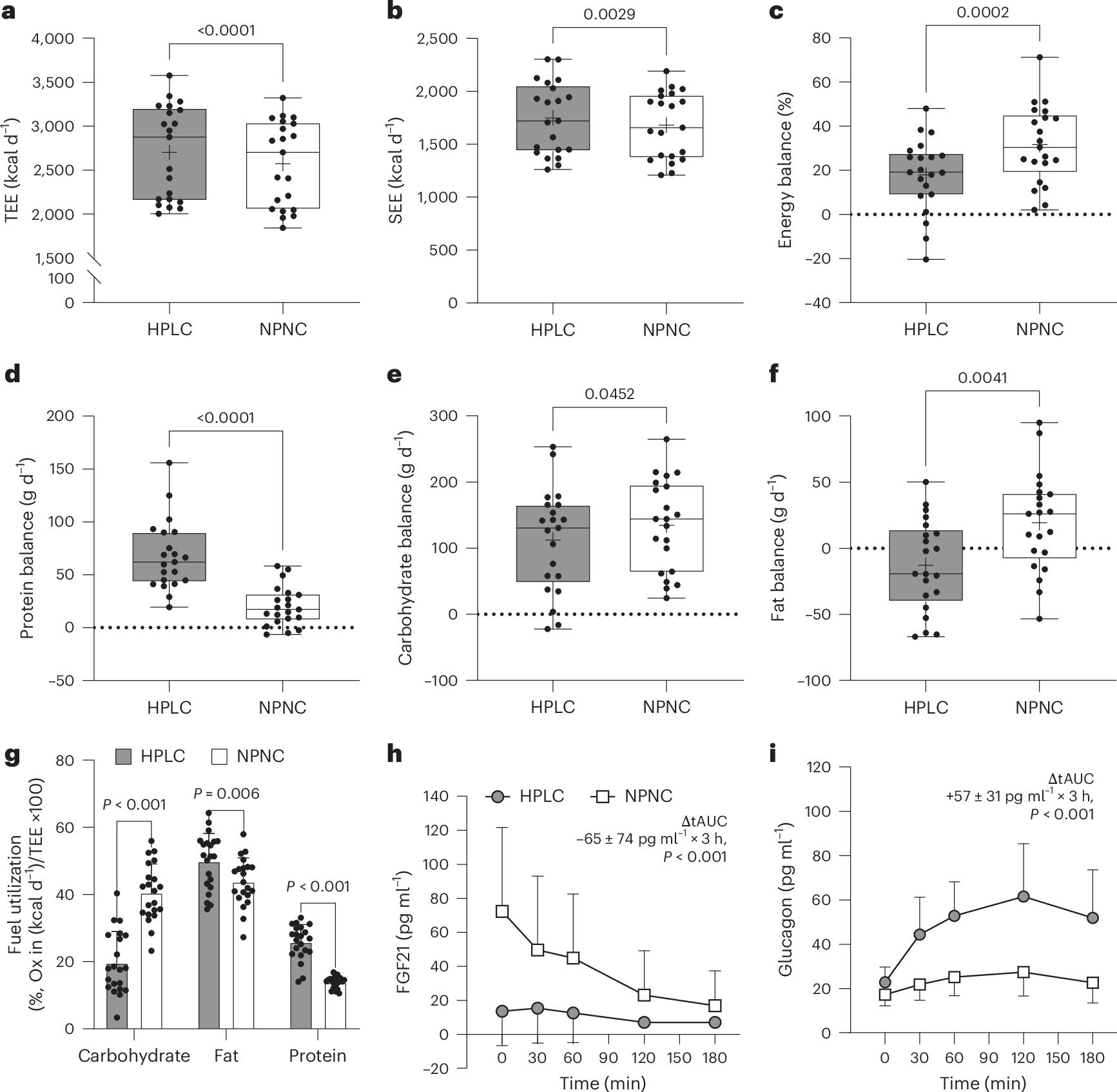
Hägele, F.A., Herpich, C., Koop, J. et al. Short-term effects of high-protein, lower-carbohydrate ultra-processed foods on human energy balance. Nat Metab (2025). https://doi.org/10.1038/s42255-025-01247-4
In this article, Coach Mike examines two contrasting high-protein intake studies, one from 2005 and another from 2025. demonstrating how they relate to and ultimately validate your high-protein, higher-SPC lifestyle.
I’ll begin by introducing SPC (satiety per calorie), a modern food metric, and explain its relevance to a study conducted two decades ago. We will after that delve into the impact of ultra-processed foods (UPF) on overall food consumption and compare outcomes between a high-protein UPF intake and a lower-protein UPF intake under ad libitum feeding conditions. This comparison will illuminate how these findings fit into the broader fact-based SPC food approach.
Finally, I’ll wrap everything up by delivering clear, actionable insights that explain why achieving a higher nutritional intake per unit of energy is universally advantageous.
By the end of this article, I hope you’ll see just how powerful it can be to cultivate lifelong habits centered around nutritionally complete, high-protein, higher-SPC foods.
The TLDR 2005 Study:
When we increase our dietary protein intake from a low level of around 15% to a better 30% of our total daily food energy, while keeping carbohydrate or fat intake steady, the result is a sustainable reduction in overall daily energy consumption.
When this adjustment is maintained consistently as a proper all-year-round food habit, it then leads to a reduction in body fat along with a host of favorable health and fitness outcomes.
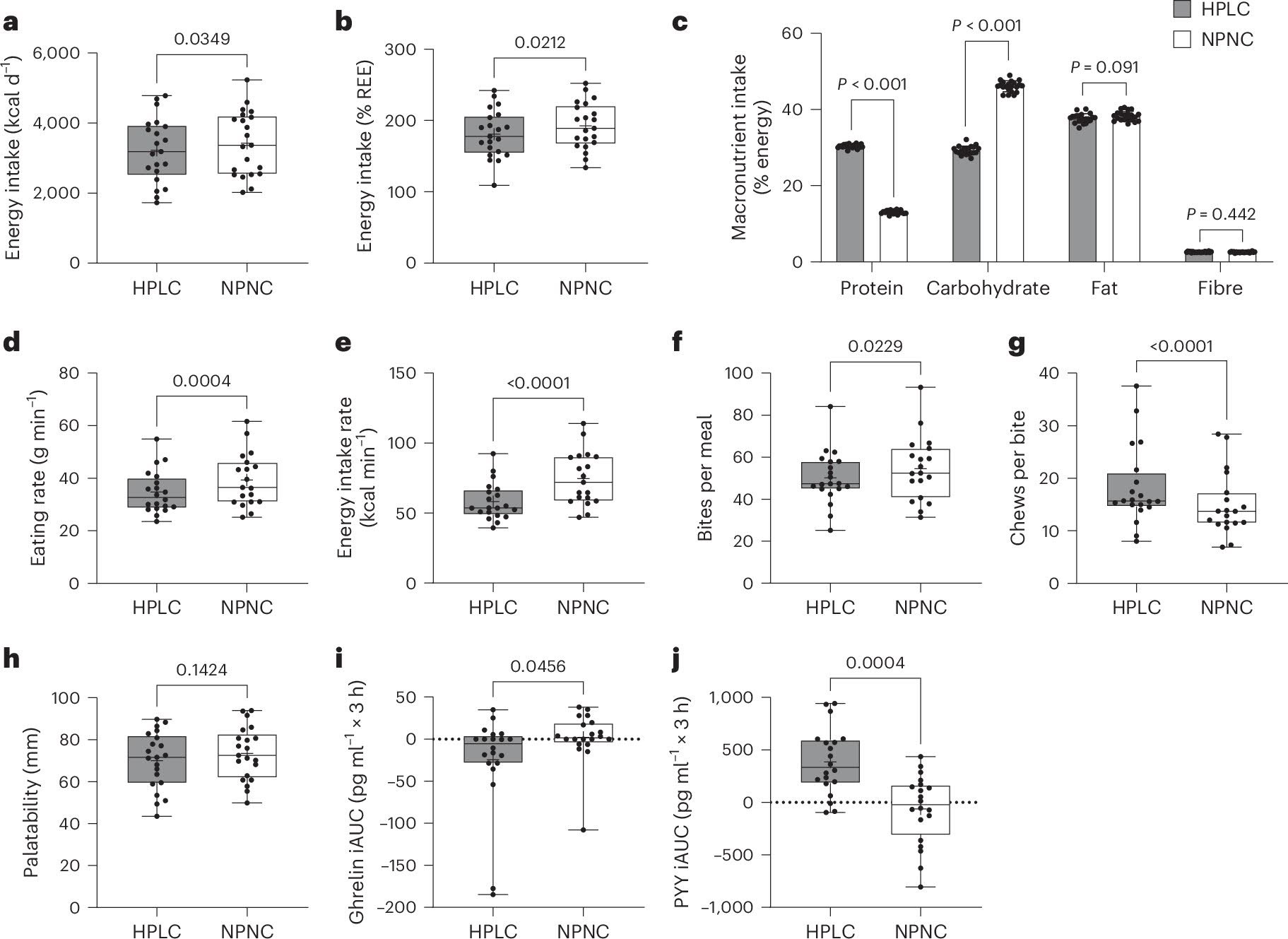
Hägele, F.A., Herpich, C., Koop, J. et al. Short-term effects of high-protein, lower-carbohydrate ultra-processed foods on human energy balance. Nat Metab (2025). https://doi.org/10.1038/s42255-025-01247-4
Higher Satiety in Play
The reason for the outcome is simple: when we boost our protein intake, largely from higher SPC whole foods, we achieve a much greater sense of satiety and a higher concentration of nutrients per unit of energy.
This translates to fewer hunger pangs and improved nutritional completeness, with significantly fewer empty calories and a markedly lower total daily energy intake. At the same time, it supports an increase in lean body mass and, when paired with exercise, delivers a clear boost to performance and recovery.
Even more compelling, the benefits of this higher SPC, high-protein approach do not wane with age. In fact, their relative advantages only, and always, increase over time.
A healthy, high-protein lifestyle is not exclusively for young gym enthusiasts; it is a foundational dietary pillar that everyone should adopt for life.
onto My own Coach Perspective
It’s as straightforward as it sounds. As emphasized in the TLDR at the start of my article, aim to increase your daily protein intake to a minimum of 1.6 grams per kilogram of body weight if you follow an omnivorous diet.
Better yet, push it to 2.0+ grams per kilogram each day and be done with grounding a proper high-protein pillar for the rest of your life.
Now, while you will not unlock any extra hypertrophy beyond what’s expected of that 1.6g intake, elevating your protein intake well above the low RDA-based levels offers far more than just a muscle-building benefit.
This is especially true for plant-based individuals and those aged 50 and above, Two groups that, compared to younger omnivores, have an elevated need for protein.
A higher SPC, high-protein diet is safe and even makes it easier to reduce your total energy intake without succumbing to hunger while simultaneously boosting overall health outcomes and lowering mortality risk.
This is the typical result seen in almost everyone who steps up their protein intake. So, what’s not to like about leaving the standard RDA groveling in yesteryears dust, far behind you?
I find it genuinely puzzling when people advocate for an RDA-level protein intake for everyone. Sure, elite endurance or competitive athletes might require such a high energy intake that a high-SPC range seems insufficient for their unique energy intake needs.
However, the vast majority of these athletes can simply add one or several extra nutritionally rich, higher-protein, higher-SPC meals to meet their extremely high energy demands.
For that small minority who struggle to find room for an additional meal, even a slight energy addition to their regular meals will bridge the gap while allowing them to eat nothing but healthy, nutritionally complete higher SPC foods.
The point I am making is this, a nutritionally enriched, higher SPC approach is adaptable, it seamlessly adjusts to your unique energy requirements, ensuring you enjoy optimal health and fitness-focused nutrition with plenty of protein and high-quality nutrients per unit of energy.
The individual level.
On an individual level, there is, of course, a very rare group of people with severe medical conditions whose bodies cannot handle a higher protein intake. But how many live with chronic kidney disease at stages 4 or 5? In all my years of coaching, maintaining a healthy, active lifestyle, and studying nutritional science, CKD stages 4 and 5 are the only conditions I’ve seen where a lower protein intake might be advisable.
Yes, you might find an isolated cancer type that thrives on elevated levels of a specific amino acid. Yet when we zoom out and consider overall mortality, disease prevalence, and general health outcomes, people fare significantly better with increased protein consumption. The adverse response of one cancer subtype to one amino acid does not outweigh the overwhelmingly positive effects that a high-protein diet imparts on most other health issues, body composition, eating habits, and mortality risks.
Hence my long-established saying.
Hence, my long-established saying: virtually everyone should follow a healthy, nutritionally complete high-protein, higher-SPC food approach.
There are a few rare exceptions based on specific medical diagnoses, but unless you fall into that category, such as patients with CKD levels, 4 and 5, just enjoy a vastly healthier and fitter life by adopting a nutritionally rich, higher-SPC, high-protein lifestyle.
Age matters.
As I have mentioned in this article and many others over the years, older adults and plant-based individuals need more protein to receive the same protein-related benefits in health and fitness as younger high-protein omnivores. I have discussed this at length over the past decade, and yet, here we are again underscoring this simple, fact-based reality. For some reason, people continue to overcomplicate or misunderstand what is, in plain terms, clear-cut science.
Other nutritional considerations?
When it comes to fats and carbohydrates, maintain a balanced, energy-friendly amount of one while reducing the other.
Or lower both if you can still secure all the micronutrients you absolutely need. Meeting your micronutrient requirements is non-negotiable. This is a major reason why a high-fat or carnivore approach is not as sustainable for the vast majority of people, in the long term as a moderate-to-high plant-rich, higher-SPC, high-protein strategy.
It is simply much harder to obtain all your essential micronutrients when your diet is extremely high in fats.
And while a deficiency in vitamin C, calcium, vitamin D, or B12 might go unnoticed over a few weeks or months, such nutritional shortcomings will not benefit you in the long run. Not to mention the remarkably underappreciated health benefits of a high-fiber intake. I know we often see scaremongering articles and social media posts warning that plant-based eaters are nutritionally deficient, with claims of inadequate protein and muscle wasting, but the reality is that far more omnivores experience nutritional deficiencies; billions, in fact.
Of course, I am not saying that Keto, high fat and carnivore food choices doesnt work. They do, with a positive short term impact on excess body fat and many health metrics. I am simply pointing out that the higher someones fat intake is, the harder it becomes to get enough micronutrients together with all your protein due to how energy rich fat is.
But I digress.
Let’s return to our macronutrients.
As you increase your protein intake, reduce either fats or carbohydrates, but do not cut either completely down to zero, and do not maintain both at excessively high levels. The simplest step after ramping up protein is to eliminate pointless high-energy foods that are loaded with unhealthy fats and added sugars. In other words, kick all the low-SPC foods out of your diet because they are doing nothing good for you.
Dumping the low SPC foods.
In other words, don’t remove whole fruits, berries, and veggies from your food plan. Not even as a misguided carnivore swayed by the confused propaganda regurgitated across social media.
Vegetables, fruits, and berries aren’t toxic just because they contain some carbohydrates or defensive plant-based chemicals. Whole, high-SPC fruits, veggies, and berries aren’t the problem, they’re very much part of the solution, no matter your food tribe preference, to the worldwide issue of unhealthy, low-SPC foods.
Nutrient-dense, whole plant-based foods provide essential micronutrients and fiber with only positive outcomes. This is why incorporating these foods is universally a better choice in a high-protein food plan than relying on high-fat foods for your energy. Fat is essential, and carbs aren’t – that is correct. So just as you shouldn’t eliminate berries and veggies from your diet, you should never cut fat consumption down to 0%.
You absolutely need the proper amount of daily healthy fats.
In fact, it is entirely possible to enjoy a high-SPC food plan that balances high fat, lower amounts of quality carbs, and high protein. Plenty of people thrive on this approach, especially diabetics.
However, a high-SPC, high-protein food plan with plenty of veggies, berries, and fruit will always be a better long-term choice for your health outcomes than a high-protein food plan devoid of those health promoting plant-based foods.
All those plant-based carbs come with abundant micronutrients and fiber. High-fat foods, such as butter, offer little more than fat-based energy. That said, I am not opposing higher fat intake. You can pursue a high-SPC, high-protein diet with low-carb and higher-fat elements, and many do so successfully. I’m simply pointing out that it is consistently worse for human health over time to consume too much butter and other extremely fat-rich foods compared to a diet rich in veggies and other whole, fiber-rich plant-based foods.
When it comes to carbohydrates, the difference between high-SPC and low-SPC carb-rich foods is monumental.
Get rid of Kellogg’s, Lunchables, candy, alcohol, premade store-bought foods, most restaurant foods, fries, pies, sugar-sweetened beverages, energy-rich ice cream, and even tasty products like mayo, mousse, and baked goods loaded with sugar and non-essential fats. The reason is simple: these foods provide plenty of energy with very few of the nutrients you want and need. They are perfect examples of low-satiety-per-calorie foods, and we do not want them in our lives, regardless of whether they are high in fat, high in carbs, or even worse, both.
High-energy, low-SPC foods are the main drivers of poor lifestyle habits behind the obesity and malnutrition crisis, fueling health-related complications for billions of people worldwide. Even if these foods wouldn’t cause immediate harm on a single-meal basis, they do not contribute positively to better health, fitness, food and lifestyle habits, or body composition.
Worse still, these foods make it far more likely that you will overconsume total food energy. Foods that are low in satiety but high in hedonistic appeal not only fail to provide adequate nutrients, they lead to our modern-day dystopia of billions of obese and overweight, yet nutritionally deficient, individuals. Such hedonistic, low-SPC foods stimulate our appetite and trigger increased hunger, causing us to indulge even more.
Sugar is not cocaine, and one bite of a candy bar, a frozen pizza, a lemon cake, or a cinnamon bun once a week or less won’t turn you into an unhealthy heap of excess body fat or cause horrid health outcomes. However, none of these low-SPC foods with too few nutrients per unit of energy are doing you any favors. Many should banish these foods from their lives altogether, especially if they are in a situation where any dietary detours are unacceptable due to the outcomes it will cause.
This is no different than the alcoholic who cannot casually sip a glass of wine once a month or every Friday and expect to remain perfectly healthy.
Do you need help maintaining better lifestyle habits?
Strength By Fitness provide private coaching, online, and on-location, in-person.
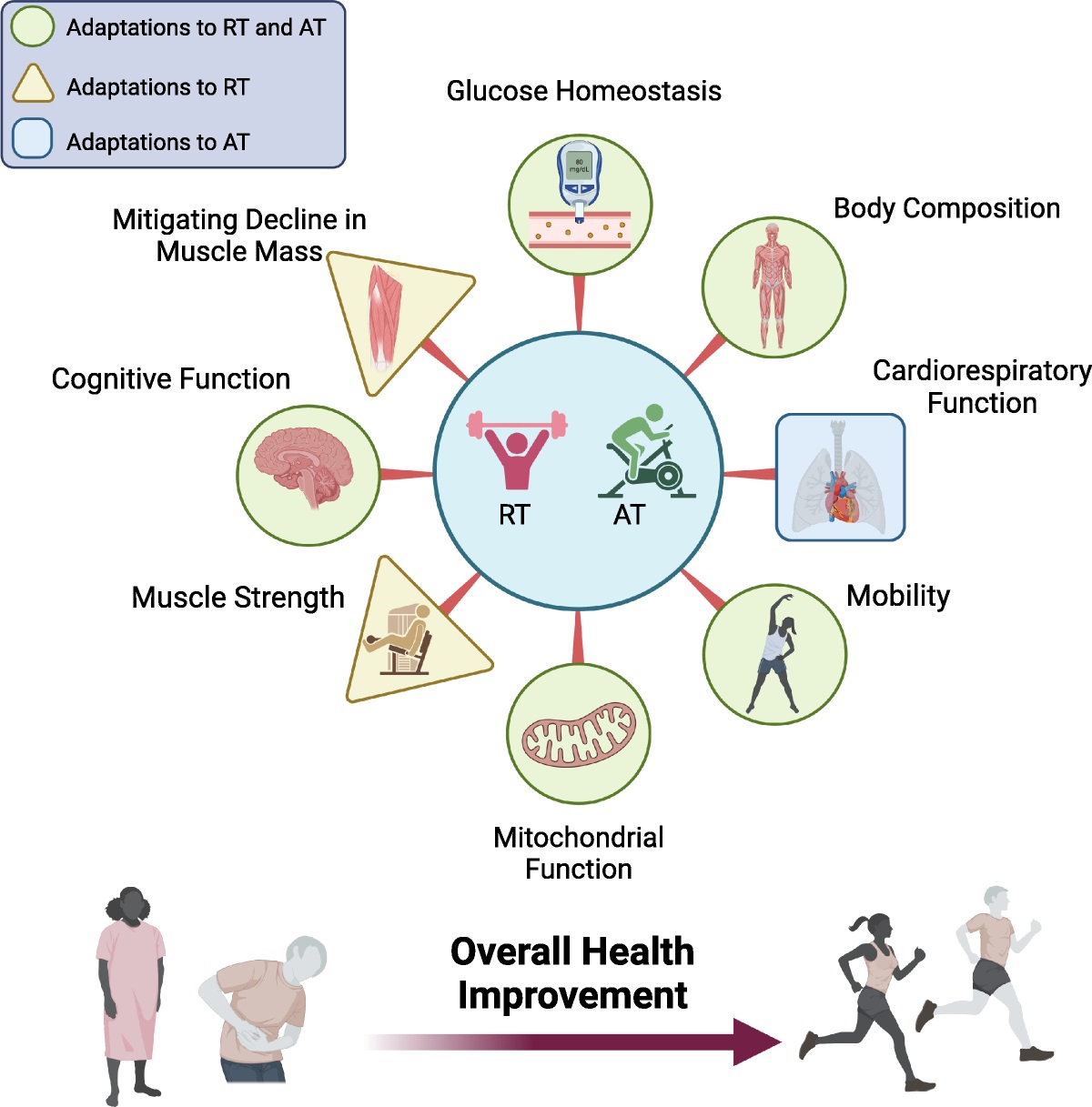
Cited Study, and Image source.
Low SPC foods are so tasty, energy rich, & low on satiety and nutrients that eating them will make you crave even more food. A 2x higher caloric intake compared to higher SPC foods is a pretty common outcome.
Low-SPC foods are so tasty, energy-rich, and low on both satiety and nutrients, that eating them triggers even more food cravings. A twofold higher caloric intake compared to higher-SPC foods is a common outcome.
This excessive energy load paired with low nutritional value per unit of energy is the sole purpose behind low-SPC foods. They are designed to generate profit by providing easy energy and making you crave even more food, because that too will increase food profits.
As such, it becomes very easy to overconsume food, leading to an excess total energy intake while simultaneously making it far less likely that you will obtain the essential nutrients you need when you wine and dine on low SPC foods.
The human body desperately needs nutritionally complete foods that deliver plenty of healthy nutrients per unit of energy to maintain and improve our health, cognitive function, body composition, and fitness performance.
Plus, if we are completely honest, foods that come packed with too much energy yet too little protein and essential micro- and macronutrients harm your health both acutely and over time. It’s not just that body fat keeps increasing when you overindulge in these indulgent low-SPC foods; the food industry has designed them to encourage you to eat as much low-worth nutrition as possible.
Our health doesn’t depend solely on not overeating calories, it also matters, greatly, whether those calories provide all the essential nutrients your body needs daily. When they don’t, your health suffers acutely and in increasingly pronounced ways over time.
Yes, protein is one of the most important nutrients, but protein, carbs, fat, and fiber aren’t the only factors affecting our wellbeing and biological processes. Micronutrients matter, too, immensely so.
Finally, current science makes it very clear that excess body fat is extremely harmful to human health given enough time.
So, waste no more of that time.
Adjust your food intake according to the big food pillar approach outlined above. Plentiful studies across several decades show that a high-protein intake from higher-SPC foods, which are richer in micronutrients, benefits all relevant outcomes, from your overall health and mortality risks to fitness progression, aging, and body composition.
You can find these nutritionally rich yet lower-in-energy foods right here on the Strength By Fitness website. Click on “curated SPC foods” in our menu located at the top of our website to see our highest-ranked meals and individual food items.
Continuously assess & adapt
Reassess your progress every two to four weeks, rinse and repeat. Each time you evaluate, make your habits just a little better by choosing healthier, high SPC foods, when needed.
“Needed” means that unless you are already content with your habits and your progress in health, fitness, and body composition, you must continuously assess and adapt throughout life. Progression is not linear; it will always swing both ways.
Developing the ability to evaluate and adjust your habits is a lifelong skill in itself, and like the ebb, and flow it will never stop.
Your vastly improved lifelong journey starts with the simple big pillar foundation I’ve laid out here at Strength By Fitness. There’s no need to worry about details like brown rice versus white rice or sweet potatoes versus regular ones, no matter what some obsessive social media influencer might say.
This mirrors the idea that you don’t have to track every minute of sleep in order to fine-tune your routine until it’s perfect. Likewise, you shouldn’t worry about the amino acid content of wheatgrass protein or whether soy milk will increase your estrogen levels. And no, boiling your fries in different dietary oils doesn’t matter, despite what misguided politicians and influencers claim.
Fries and crisps are, bluntly, low-SPC foods you simply should not be eating regularly. View them as unhelpful treats, best consumed in small, rare amounts or not at all. This isn’t because whole potatoes are bad, but because fries and crisps represent the worst low-SPC version of the nutritious food staple that´s the whole potatoe.
It´s just another tasty way to ruin a good food staple while increasing food consumption and profit.
Similarly, a bowl of soaked rolled oats with one banana for breakfast won’t harm your health. Cut out all the junk like low-SPC foods and bump up your protein intake. That’s the number-one food pillar for everyone seeking better health outcomes.
👊☕️
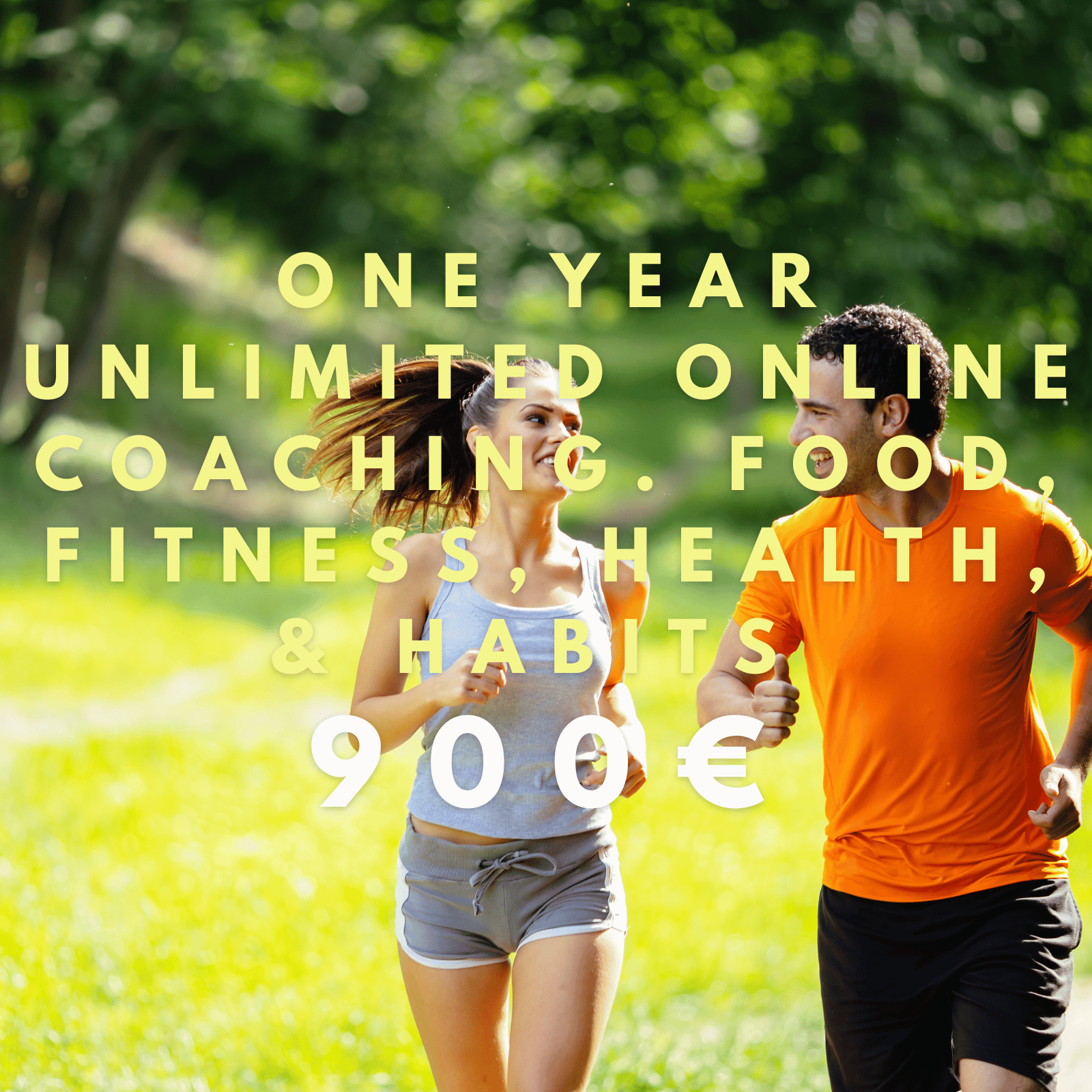
Older people need more protein per meal and day. and they need regular strength training too
Lets Look at Some Numbers from the Cited 2005 Study
There is another reason I am discussing this decades-old 2005 study.
High-satiety, high-protein diets may be all the rage now, but the foundational science isn’t new. Today, we have far more data, better insights, and vastly improved studies building on these early findings. But the understanding of just how beneficial a more nutritionally complete, higher protein intake are is nothing new people. It´s not a new concept, it is extremely well researched and with tens of millions of successful real life examples.
Whether it’s from our own coaching, the AI-based Hava app, or other experienced coaches and organizations that understand the fact-based benefits of combining high-protein and high-satiety foods with nutritional completeness, the message remains clear. This 2005 study got many basics right, demonstrating just how well-established the high-protein approach has been for decades. Even 30 or 40 years ago, people recognized the benefits of increased protein intake for building strength and muscle mass, they just didn’t know as much as we do now.
The fact-based foundation was already in place.
In this study from 2005, 19 brave participants lined up to dine on a high-protein diet. Their ages ranged from 27 to 62, body weights spanned from 56.1 to 88 kilos, and BMIs fell between 22.5 and 30.1. Furthermore, appetite, energy intake, body weight, and fat mass were measured in all 19 participants who completed the study. Because all meals were pre-prepared, differences in food preparation could not account for the observed effects.
The weight-maintenance plan used a very low protein intake of 15% along with 35% fat and 50% carbohydrate for two weeks, a timeframe I find ridiculously short for any dietary change. This protein level is unusually low, and in real life there is no need to go this far down. Remember, a higher protein intake consistently delivers better health, fitness, and body composition outcomes; it should never be viewed as a temporary diet choice.
A nutritionally complete, high-protein, high-SPC approach should be a lifelong habit, given its infinite benefits over the course of your health span, life long habits are far superior to a quick 10-week diet that’s only designed as a desperate attempt to squeeze into a bikini or wedding dress.
In the study’s second phase, the same participants followed a two-week diet with a more adequate protein intake of 30%, 20% fat, and 50% carbohydrate. My only objection to this phase is that, while 30% is significantly higher, forcing a predetermined food volume and meal count defeats the core premise of a high-SPC approach. A higher protein intake naturally leads to an involuntary reduction in total energy intake thanks to the increased satiety it provides. Although 30% protein offers many benefits compared to a standard RDA level, there is an even greater SPC boost when protein approaches around 40%. I mention this to offer valuable, real-life insights for you to apply to your own food plan. This study is extremely valuable, but it isn’t a perfect blueprint for everyone.
Finally, the study included an ad libitum diet phase with the same relative macronutrient distribution, roughly 30% protein, 20% fat, and 50% carbohydrate for 12 weeks. Unlike the shorter phases, 12 weeks is a sufficient timeframe to properly assess outcomes and make educated adjustments as needed.
Higher SPC & ad libitum eating.
Give Us the Study Results:
Satiety clearly increased during our two high-protein diet phases. This led to a much lower sensation of hunger and fewer food cravings. As a result, the total average energy intake decreased by 441 ± 63 kcal per day during the first phase with a 30-percent protein intake.
Do you see that?
A higher-protein, higher-SPC approach directly leads to consuming less energy each day and week, even when meal size, volume, and the number of meals are predetermined.
Who could have guessed?
Most importantly, when focusing on the final 12 week long high-protein, ad libitum plan (ad libitum simply means “eat as much as you want”, imagine a free-range brown bear family munching on infinite amounts of healthy high-protein foods and you get the picture ), body weight decreased by 4.9 ± 0.5 kg and fat mass decreased by 3.7 ± 0.4 kg despite being allowed to eat as much as each participant wanted to.
This decades-old study serves as clear evidence of just how beneficial and easy the high-protein, higher-SPC approach is, more protein, and a higher SPC, and better nutritional completeness provide better outcomes across the board.
Study number two. High-protein and higher UPF at the same time. Low SPC versus higher SPC in the context of UPFs.
Now, as mentioned earlier, this article examines several SPC, UPF, and protein studies. So let us fast-forward to 2025 and explore a brand new ultra-processed, high-protein study. Because the element of almost only living on super easy to eat UPF introduce a interesting obstacle to navigate.
Comparing a UPF High-Protein, Lower-Carb Intake with a Low-Protein, Moderate-Carb Intake
This second study recruited 21 healthy young adults who were randomly assigned to two different UPF diets for 54 hours in a whole-room calorimeter.
The first group followed an ultra-processed, high-protein diet in which 30% of energy came from protein and 29% from carbohydrates. I will refer to this group as HPLC-UPF.
In contrast, the second group consumed a very low-protein diet, with only 13% of daily energy derived from protein and 46% from carbohydrates. Both groups received 49% of their daily energy from fat, so fat intake was quite high for everyone.
Meals were designed to be equally palatable and were matched for calories, fat, and fiber. Both groups were allowed to eat ad libitum.
Compared with the NPNC-UPF group, the HPLC-UPF diet plan resulted, as expected, in a slightly higher energy expenditure. Not by much, only a difference of 128 ± 98 kcal per day. This finding confirms my assertion that while the thermogenic impact of foods is real, it is extremely trivial and often overhyped.
Don’t get me wrong.
The thermogenic effect is a minor yet very real benefit of a higher protein diet. The human body works hard to break down, absorb, and utilize protein compared with the easily accessible energy in fats and carbohydrates. The thermogenic impact of these nutrients simply doesn’t make a significant difference in everyday life, but it is nonetheless present.
The high-protein group also ended up with a lower energy intake. In this phase, the difference was slightly larger, approximately -196 ± 396 kcal per day. Once again, this is as expected: more protein leads to less food consumption and reduced hunger, even when the food is ultra-processed.
Overall, the higher-protein group achieved a better, though not dramatically better, energy balance.
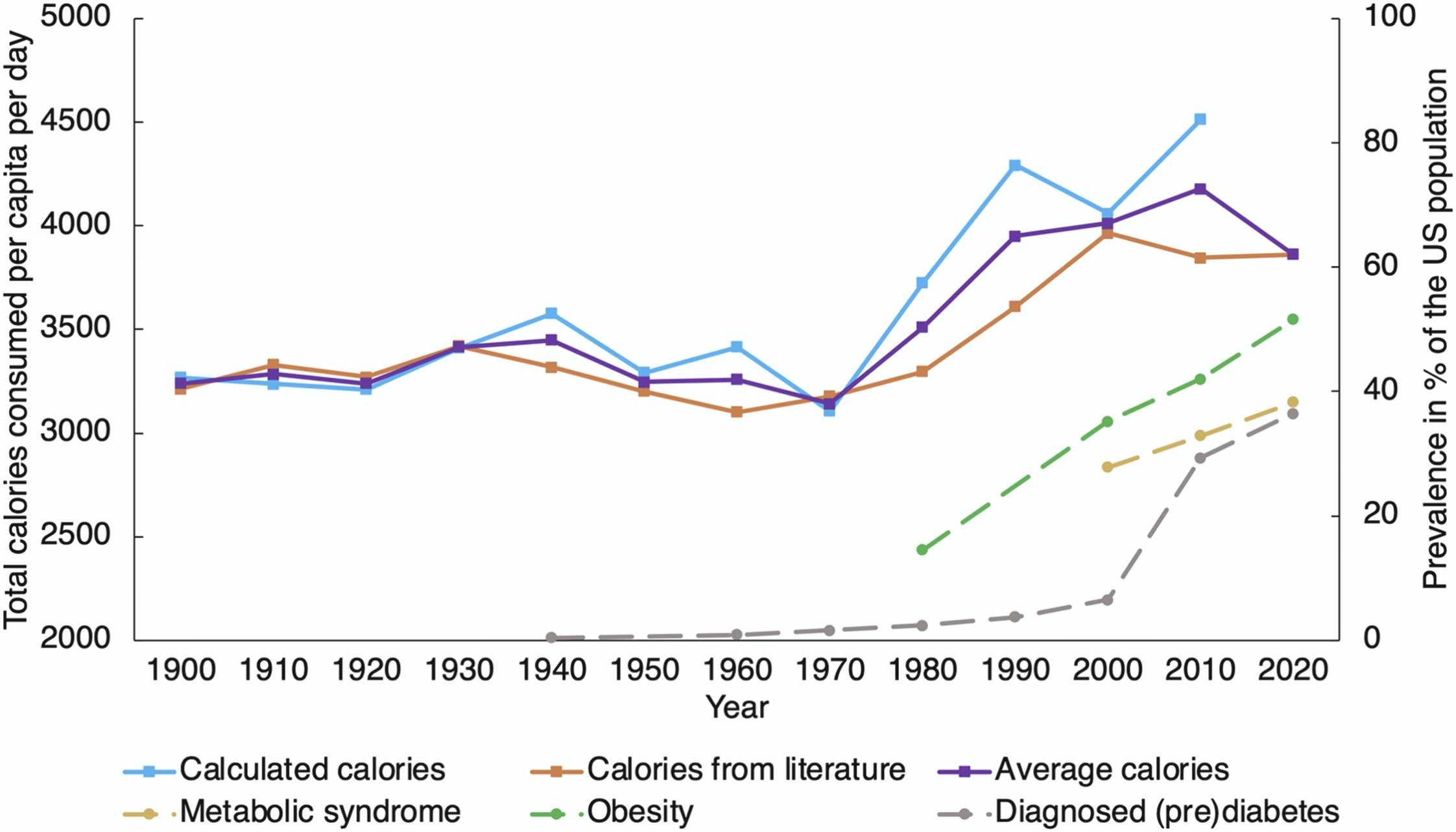
Other Differences in Outcomes
Postprandial ghrelin levels were lower, while glucagon and peptide YY levels were higher in the HPLC-UPF group compared to the low-protein UPF group in this study.
I did say that the energy balance still wasn’t great in the higher-protein group. That’s because, despite the reduction in daily energy intake and the minor increase in energy expenditure, the protein-rich UPFs were not high enough in the SPC range to prevent the higher-protein group from overeating too.
They did better relative to the low-protein group, but to achieve a truly balanced energy intake or even an energy deficit, the SPC aspect of the meals would need further adjustment.
This is where reality clashes with the food industry’s practices head-to-head. The food industry has consistently put profit over consumers’ health outcomes. Most advertisements promote junk food and poor eating habits that lead to disastrous long-term results.
Consumers expect food to be labeled and marketed honestly. So when you see something called high-protein, that’s what you assume it is. Similarly, when a product is marketed as a tasty way to get more healthy veggies, people expect that processed, smoothie-like cream to deliver actual nutrition instead of being a low-SPC trap that contains only trace amounts of veggies.
For the food industry, however, a high-protein label might simply mean that the product contains slightly more protein than the completely worthless options in the same segment. Just think of the many protein bars that boast a high-protein claim but deliver less than 10 grams of protein per bar 😅😅😅
Here cometh the reality of how it should be.
A real high-protein, higher-SPC food approach could without problems provide roughly 40% protein out of your total energy intake, give or take a bit, so that´s not even a max cut off point.
While boosting a 50+ SPC range.
The food industry often labels many ultra-processed foods as higher in protein even when protein makes up 20% or less of the total energy content. Although this is higher than in foods with even less protein, it is not a genuine high-protein intake, and it certainly isn’t enough to make it a higher-SPC food choice.
Consumer expectations of these products are high, as they should be. A true high-protein, high-SPC approach supports health, muscle mass, satiety, and thermogenesis. Always examine the nutritional content of both individual food items and the complete meal rather than relying solely on labels and advertisements.
Follow the nutrients, not the marketing and printed labels on the food package.
More about the 2025 UPF Protein Study
In this study, all participants were assigned to one of two diet groups for 5.5 days:
The HPLC-UPF group followed a plan with 30% protein and 29% carbohydrate.
The NPNC-UPF group consumed a very low protein diet, only 13% protein, with 46% of daily energy coming from carbohydrates. (Both groups obtained 49% of energy from fat. Which is a high fat intake too. So right away we can see that there will be a very large energy intake for the lower protein group since a high carb, and high fat intake is a very potent ad libitum low SPC combo.
The study design was as follows: Days 1–3: Run-in phase with less than 45% UPF consumption. Days 4–6: A 54-hour intervention with more than 80% UPF consumption.
After this phase, both groups switched to the other diet plan for another 5.5 days.
Some Remarks.
Neither approach represents a true high-protein, high-SPC regimen. While the group with higher protein did perform better, the improvement was not sufficient. Despite the increased protein, all study participants still experienced an increase in body mass, courtesy of UPF products that were too energy-dense per unit of nutrients (in other words, the per-meal SPC range was far too low in both groups).
It is important to note that the higher-protein group consumed quite a bit of protein in total. While that is a positive change, the energy provided per unit of nutrients was still far too high relative to what is required to lose body fat.
This reflects a common real-life experience: many overweight individuals diet and feel positively that they have made a substantial change, yet the improvement isn’t enough because expectations, and the percieved effort do not match the nutritional reality. If you are coming from a very high energy intake and then reduce your food volume, you will feel that change, but if that change isn’t sufficient, you still won’t lose excess body fat.
This brings us back to my perpetual coaching advice.
Always observe your outcomes and adjust your habits until you reach your desired results. In this study, an optimal approach would have involved incorporating more fiber and protein-rich whole foods at the expense of cutting out energy-dense UPF content.
Such a strategy would have raised the SPC (i.e., reduced the energy per unit of nutrients), ultimately leading to fat loss, and superior outcomes.
Both food groups in the study exhibited an energy density of 1.6-2.4 kcal per unit of nutrient, and this is where the study ultimately fell short. A genuinely higher SPC meal can with little problem have less than 1 kcal per unit of nutrient ratio. So, as you can see, despite all the protein, the high-protein meals these groups consumed had a energy vs nutrient ratio that was as high as 2.4x the energy per unit of nutrition a really good higher-SPC meal plan should roughly be at.
Meals were consumed ad libitum and were designed to be equally palatable and matched for food type, fat, and fiber content. Protein intake was 3.3 g per kg body weight in the HPLC-UPF diet and 1.5 g per kg in the NPNC-UPF diet. As far as total protein intake goes, both groups qualify as high-protein, and 3.3 g per kg is a substantial amount. However, neither group consumed foods with a sufficiently high SPC. The UPF products they consumed delivered far too much energy per unit of nutrients.
Interestingly, the scientists also ran a third group, a high-protein, lower-UPF group.
This group achieved the lowest energy intake, even though almost 50% of their daily energy still came from UPF foods. As expected, all three groups demonstrated that the higher the protein intake and SPC range, the less food is ultimately consumed. Unfortunately, none of the groups reached an optimal SPC.
Ergo, the higher protein interventions in this study represent a step in the right direction, yet they relied on foods, and meals that where way too low in SPC. Despite having a higher total protein intake, all groups featured an SPC range that was simply insufficient.
How can that be?
‘It is true that protein is one of the most important macronutrients for human health and central to the entire SPC approach. But it is not the only consideration. The UPF foods in this study provided too little fiber and far too few macro- and micronutrients per unit of energy.
For instance, compared with the HPLC-UPF energy balance outcome, the HPLC diet in the third phase produced an energy reduction of -367 ± 264 kcal per day versus -196 ± 396 kcal per day in the original higher-protein UPF phase.
Once again, the difference is not gigantic because all groups consumed large amounts of energy-dense, low-nutrient UPF foods. This demonstrates that the positive impact of high protein improves dramatically as the SPC range increases. High protein is always beneficial, as seen in these groups with high energy-dense ultra-processed foods, but it won’t be enough on its own if the rest of your food choices are of low quality and overly energy-rich.
Imagine for a second someone consuming 400 grams of protein powder per day dissolved in water along with ad libitum table sugar. There’s a ton of protein, yes, but the overall nutritional completeness is extremely low, and with all that sugar, the empty energy intake will rapidly become astronomical. Now, if you were to replace the water with sugar-free soy milk and swap table sugar for whole apples, berries, or oranges, the total food consumption and energy intake would plummet like a falling star, leading to vastly better outcomes in fat mass, body composition, and overall health.
The problem with this study is not that it used UPF foods per se, many ultra-processed foods can provide excellent nutritional value and a high SPC range. The issue was that they delivered too few nutrients per unit of energy. The positive benefits of high protein were outworked by the negative impact of low-SPC UPF overconsumption. Low-SPC UPF foods increase energy density, hyperpalatability, and offer a hedonistic, soft texture that makes them irresistible. This matters because the more hedonistic the food, the more universally people are drawn to eat it.
In this study, the higher protein intake partially offset the negative effects of the low-SPC ultra-processed foods, but not enough on its own. The meal planner had done a poor job of providing a high enough SPC if this would have been a real life healthy food intervention.
That is why nutritional completeness and a higher SPC range are critical, not merely the absolute amount of protein consumed.
Examples of truly beneficial processed foods include unsweetened soy milk, textured vegan soy protein, edamame pasta, and seitan. These plant-based products are very high in both protein and SPC and lead to better outcomes in habits, health, fitness, and body composition.
At the end of it all, we have two different studies separated by a 20-year gap that both support the fact-based reality I have been advocating. And it’s not just me, Hava and the Mind, Muscle Project are showing the exact same results.
This is not opinion or entrenched diet-tribe conjecture. It is the cold hard fact of real life, extensive studies across decades, tens of millions of longterm n1 examples, all reflecting my own experience and yours, too.

About this image, nutrient intake between 1900 and now, see this study for the data and image source.
Intake of fat has increased drastically with added sugar reaching about 340%, and that is a number that is absolutely insane because added sugar provides no nutritional benefits, its pure energy.
Lines indicate percentual deviation from the baseline (macro)nutrient intake in the year 1900. Healthy whole plant-based carbs have not changed much however compared to 120 years ago. So when people claim that carbohydrates have increased it is the added sugar in all the processed foods and consumption of low SPC foods that´s increased.
Poor food habits and to little exercise per week are driving poor health outcomes, obesity, cancer, dementia, and metabolic syndrome. Habits, not genetics.
Nutrients per unit of energy matters tremendously much
What Else Do We Have?
Oh yes, this is worth highlighting.
The largest difference in energy intake occurred when comparing high-protein groups with different levels of UPF consumption. In other words, this study showcased exactly what I described earlier. When the SPC range per meal and per day is higher, and protein intake remains high, the outcomes significantly improve.
The biggest drop in energy intake was observed between the two high-protein groups with opposite UPF intake, the higher-UPF group consumed an extra 760 ± 464 kcal compared to the high-protein group with the highest SPC range.
A major factor in this difference was the higher fiber intake in the lower-UPF group. A high-protein diet that includes more fiber leads to a higher SPC per meal and day, which in turn drives total food consumption way down. Fewer ultra-processed foods mean more fiber; more fiber increases satiety, promotes better gut health, enhances short-chain fatty acid production, and ultimately lowers the energy per unit of nutrients consumed, while improving all outcomes across, health, body composition and fitness.
The lower your UPF intake, the less you tend to eat on average. In fact, consuming a lot of UPF can by itself cause a 500- to 1000-calorie increase per day for the average person, something that many past and current studies have demonstrated. When high UPF content is paired with a low SPC, your daily energy intake can easily double compared to what you would consume with a high-protein, higher-SPC food approach.
Remember, lower energy intake per unit of nutrients equals a higher SPC, which automatically reduces overall energy consumption. You cannot simply drink 500 g of protein powder mixed with 400 g of fat and 50 g of raw sugar and call it a day. Protein is the biggest macronutrient pillar, but SPC matters (energy per unit of nutrients), and fiber and micronutrients matter too.
Study Outcomes
Energy balance remained in a surplus for both diet groups that consumed more than 80% UPF, which is consistent with the findings of Hall et al. High UPF intake, even within similar food groups, universally results in increased body mass and fat mass.
However, the energy surplus was lower in the high-protein UPF group compared to the low-protein UPF group: +18% versus +32%, respectively. Keep in mind, a surplus of this magnitude will undoubtedly lead to an increase in body fat and body mass if maintained long enough.
This confirms the validity of a high-protein, higher-SPC approach. As protein intake increases and the SPC improves, overall food consumption decreases. Still, the positive changes in the study, while moving in the right direction, were not sufficient to produce optimal outcomes.
If this were a real-life coaching scenario, the next step would have been to raise the SPC significantly by providing more fiber and micronutrients per unit of energy. This adjustment would further reduce energy intake in an ad libitum UPF setting.
Assess outcomes, adjust habits, and then repeat the process.
Do this continuously because healthy food habits are a lifelong commitment, not just a five-day health break. With real coaching intervention, a high-protein, higher-SPC approach would eventually lead to a true energy deficit: eating fewer calories while receiving substantially more nutrients per unit of energy. This would result in reduced excess fat, lower overall food consumption, and better health outcomes.
The higher protein interventions in this study show promise but fell short because the foods were too low in SPC. The takeaway is clear: protein matters, but without high SPC, thanks to sufficient fiber and micronutrients per unit of energy, the benefits can be easily negated by the inherent energy density of ultra-processed foods.
A final note from the scientists of study n2.
The lower energy intake with HPLC-UPF corresponds to the phenomenon of ‘protein leverage’.
Ad libitum intake of HPLC-UPF could not prevent overfeeding even at very high protein intakes (>3 g kg−1 body weight).
This suggests that the higher eating rate of UPF and a relatively high energy density ( low SPC range ) may ameliorate the protective effects of a high-protein intake on weight gain ( because SPC was not high enough, as I keep saying ).
In other words. Both of these studies despite having 20 years between them are displaying the same benefits of higher protein intake and a higher SPC range per meal and day, every week, all year round. Keep adjusting until you get the SPC range and nutritional completeness right for you high-protein food plan and the desired outcomes will follow.
😃💪💪.
Strength By Fitness will shortly be back with a high UPF consumption article on small toddlers and kids, because the food industry is not content with harming adults bodies, habits and health outcomes, they are working hard to reap higher profits by promoting the same unhealthy, nutritionally poor low SPC food habits for small kids too 🤯.
Cited study.
1. The 2005 high-protein study.
https://pubmed.ncbi.nlm.nih.gov/16002798/
2. Human evolution, energy expenditure.
https://www.pnas.org/doi/10.1073/pnas.2409674121
3. Genetics matter but habits own the driver’s seat.
https://www.sciencedirect.com/science/article/abs/pii/S0167494323002601?s=09
4. The gigantic difference in calories consumed between 1900 and now.
https://www.sciencedirect.com/science/article/pii/S2213434423000452?s=09
5. Trends in nutrition and health between 1900 and now.
https://www.sciencedirect.com/science/article/pii/S2213434423000221?via%3Dihub
6. Chronic Kidney Disease and High-protein. Improvements in health and mortality outcomes.
Kidney Disease, & High-protein Intake What´s The Health And Mortality Outcome. — Strength By Fitness
7. Low SPC, UPF and high-protein.
https://www.nature.com/articles/s42255-025-01247-4
You can also read this article over at Medium if you are a paying Medium Member.
Do you need coaching help in order to create a healthier life? Strength By Fitness coaches people online and in person. This includes fitness, fat loss, nutrition, and health. Strength training, endurance, yoga, and combat sports classes. Just click coaching in the menu up above and let us transform your health & fitness journey through life together.
strength by fitness
podcasts
recent articles
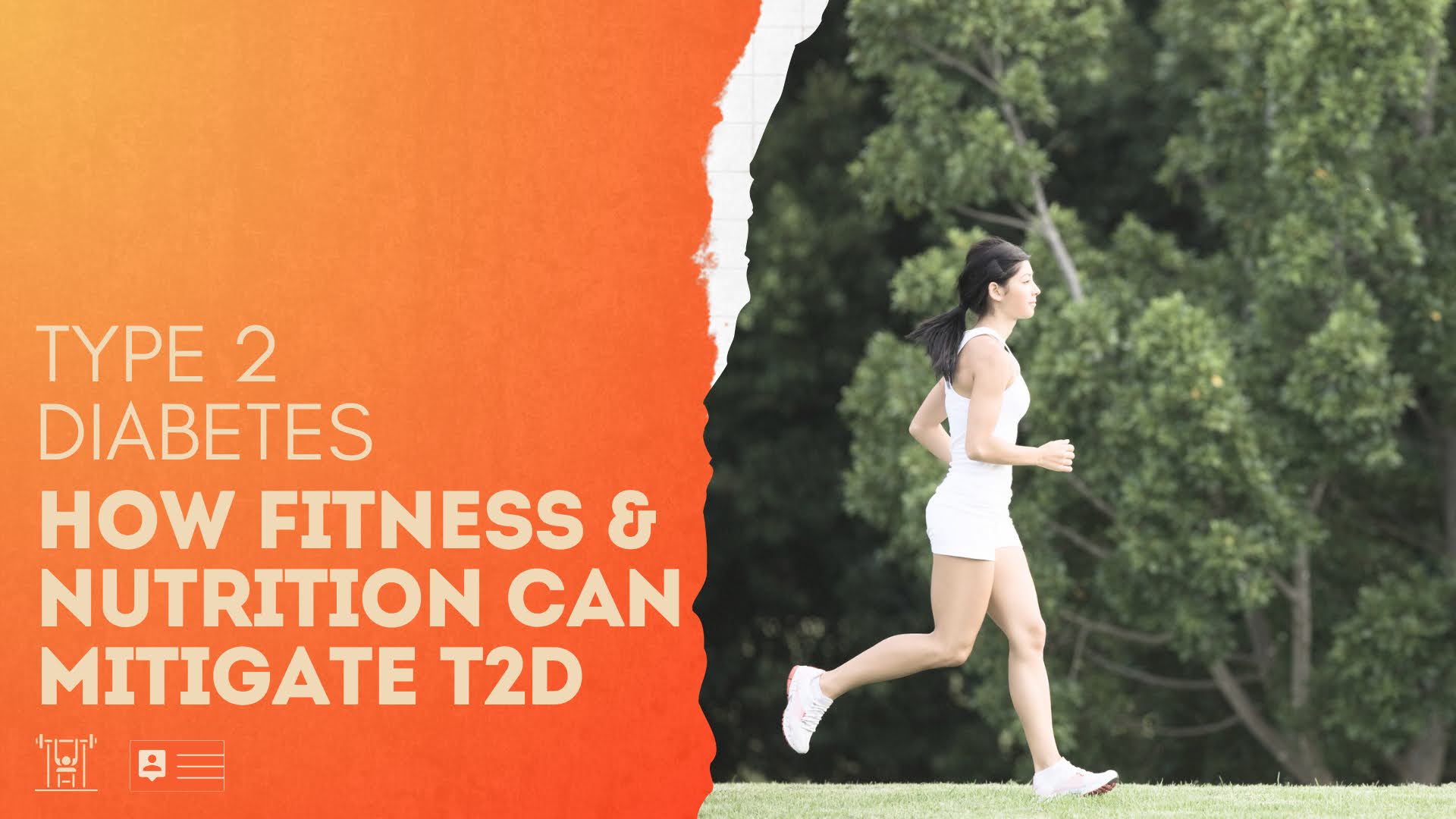
Type II Diabetes: How Fitness and Nutrition Can Mitigate and reverse t2d. Exclusive Member Article.
IF you want to prevent type 2 diabetes, or reverse it, if the damage has already been done, as it has for hundreds of millions of people around the world, you have three massively powerful and influential habits at your disposal. Welcome to another fact-based member-exclusive Strength By Fitness article.
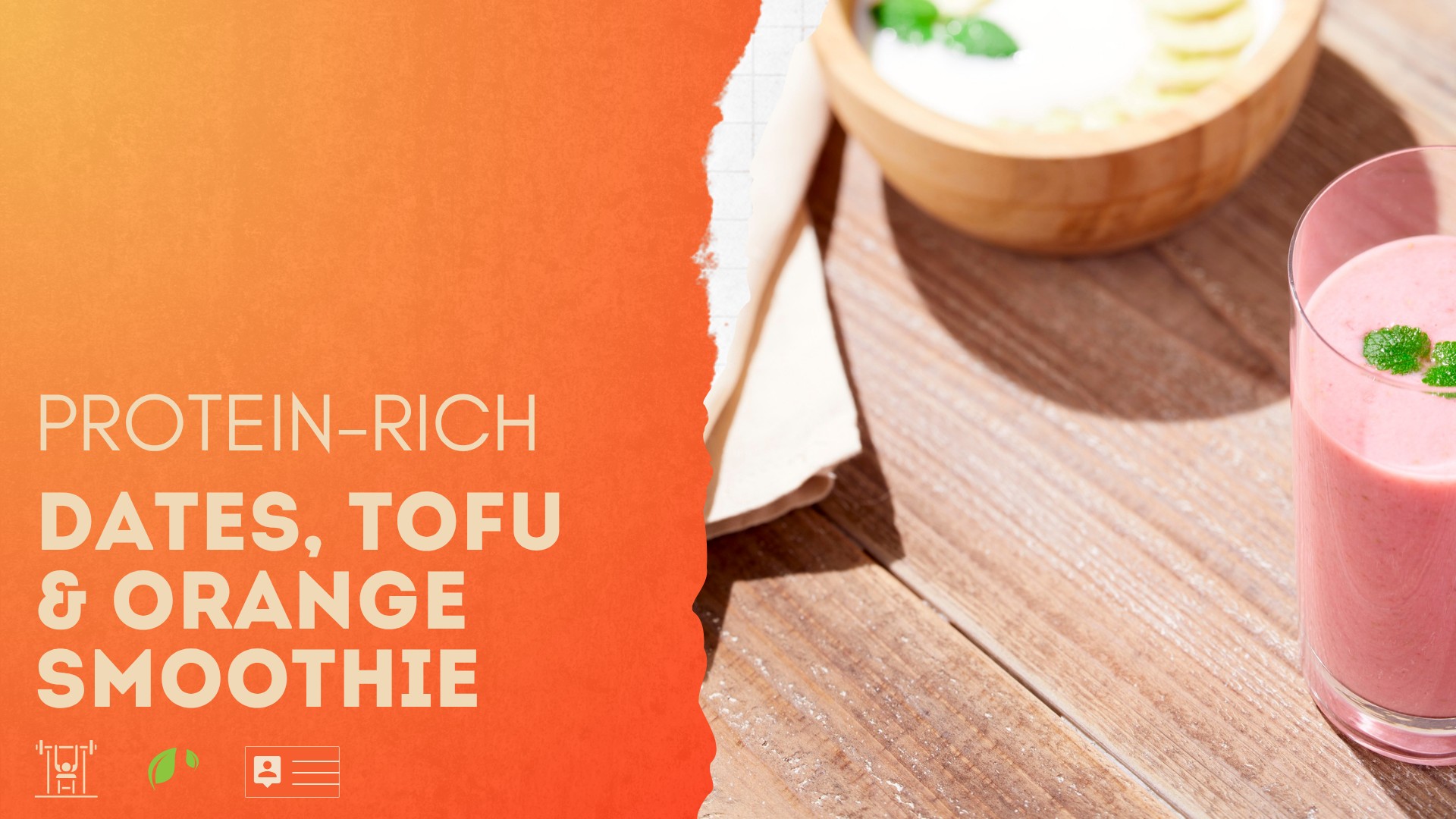
Members & Clients Recipe: Tofu, dates & orange smoothie. High SPC & Protein.
Our Tofu, dates & orange smoothie provides 56g of Protein, 22g of fiber, and a very high SPC between 66 & 80. That makes this another tasty Strength By Fitness winner. Paid Reader & Client Exclusive Recipe.

Quality Sleep Is Just Another Habit.
Quality sleep comes from a few key pillars in a healthy lifestyle.
Yes, quality sleep is just another habit we build over time with nothing more than our own choices. In this article, Coach Mike from Strength By Fitness will teach you how to do it too.
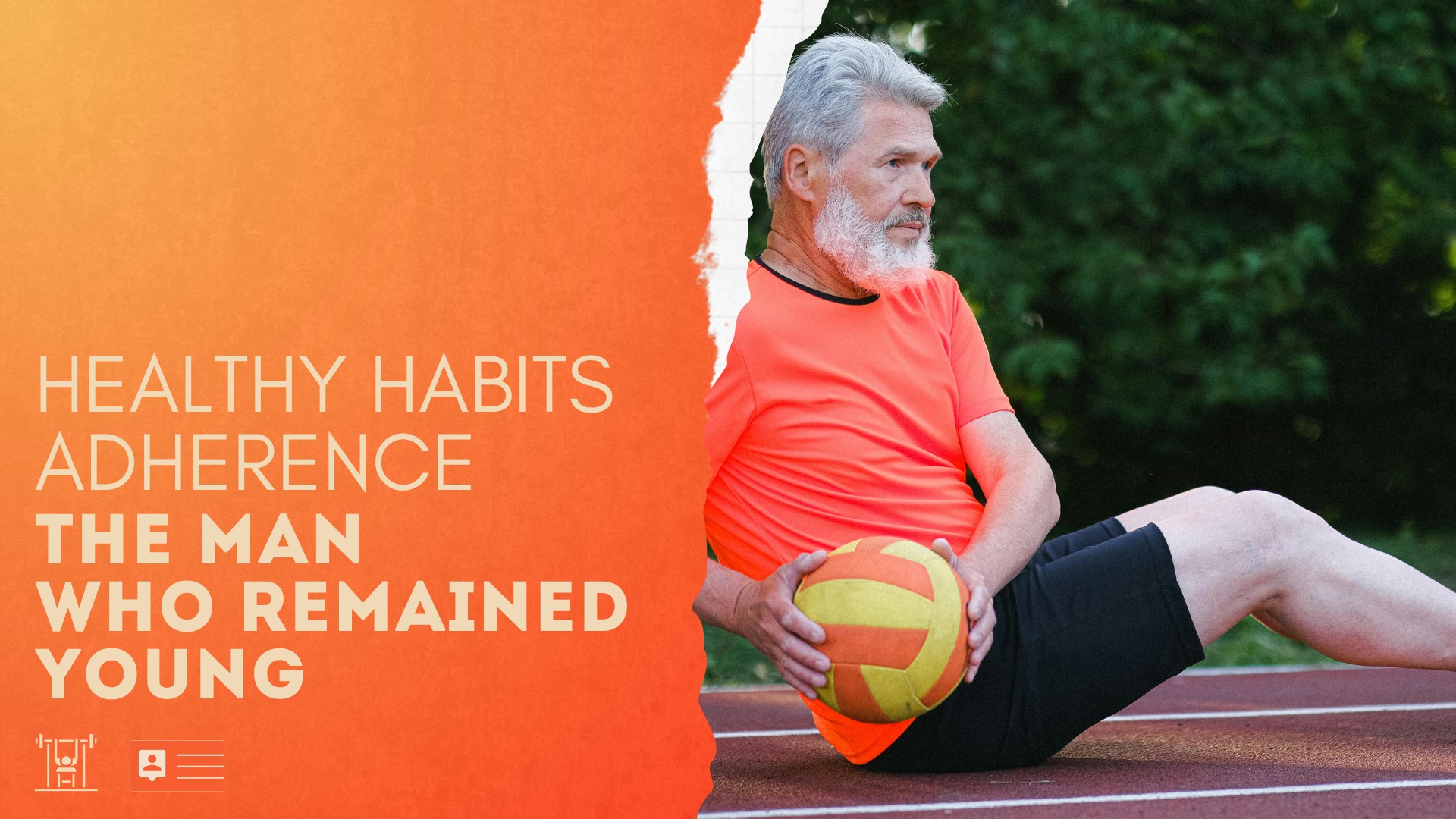
The Man Who Remained Young. Healthy Habits vs Ageing: Exclusive Member Article.
Strength training, injury-free, 80-year-old men can be as strong as a 35-year-old gym goer. And running is no different. All it takes are maintained habits. Exclusive Strength By Fitness Member Article. Join today, only 9$ Per Year.
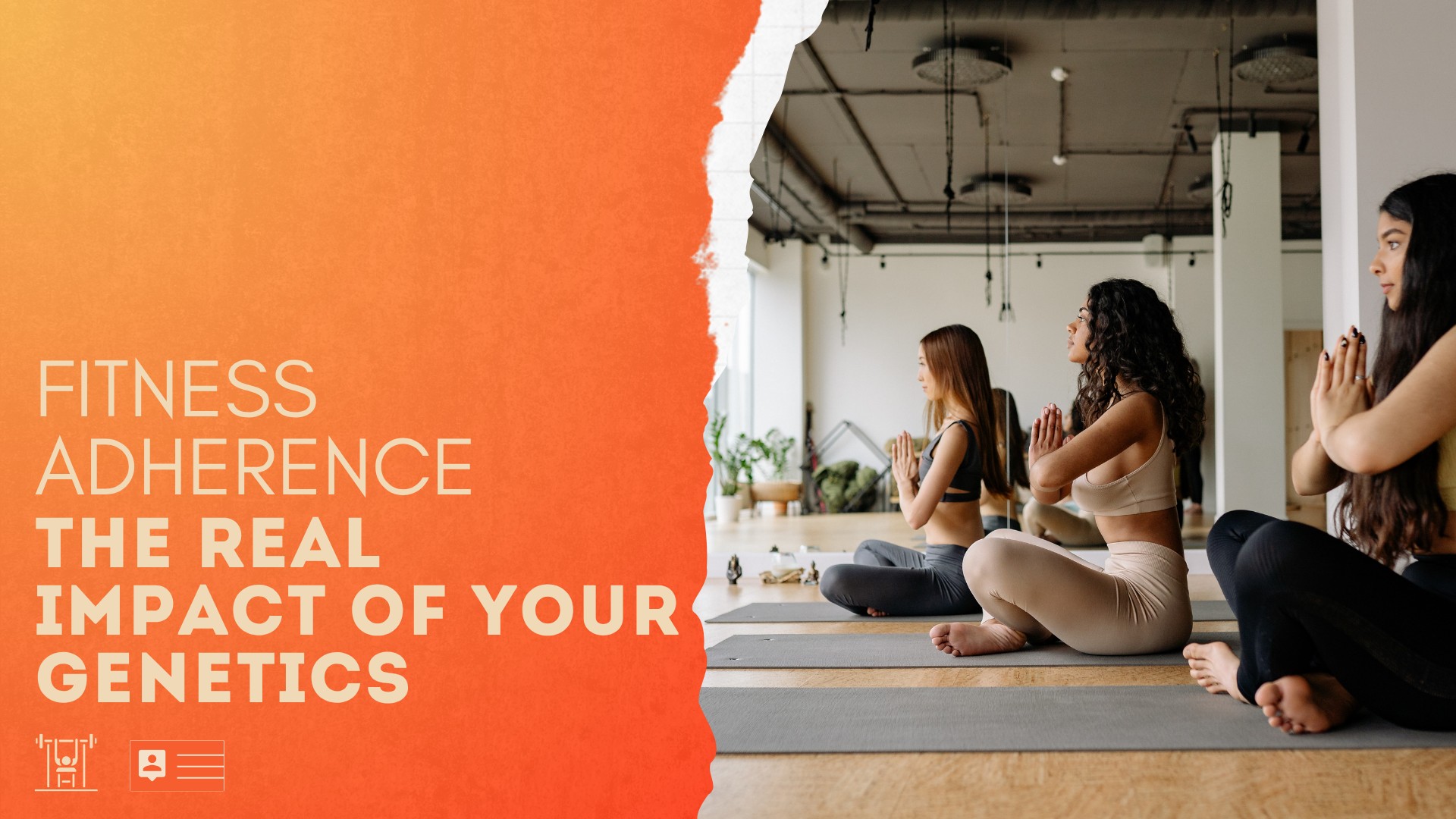
Genetics vs Fitness Habits: Part IV. Exclusive Member Article.
Good habits will always move everyone in the right direction. Your genes then decide just how far your ceiling goes. For every single person on the planet, this means becoming way healthier and fitter over time, and as long as you maintain those habits, the positive outcome won’t go away.

Regular Exercise Habits For Children Provide Massive Benefits All Through Life
Fitter kids rapidly become healthier kids.
These fitter and healthier kids eventually go on to become much fitter and healthier adults with a higher quality of life, better physical capacity, work performance, cognitive health, and ageing trajectories.
If they mainta…
We appreciate you
so stay healthy & never stop training
Contact
Private In-App Messaging is Available For All App + Coaching Clients
Adress
Coaching Is Available Online Via App on IOS & Google Play, and In-person, On-location.
Copyright 2025 Strength By Fitness.
